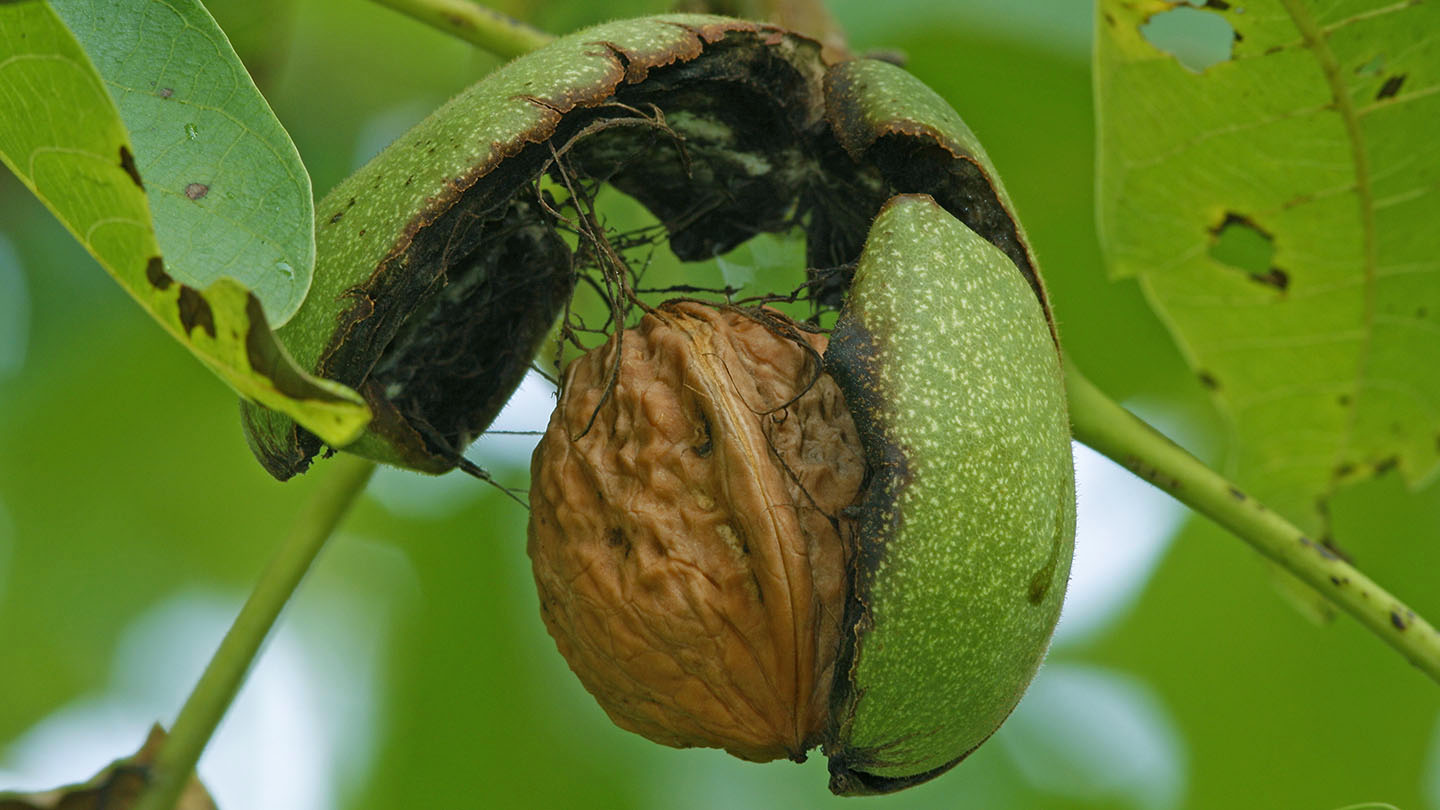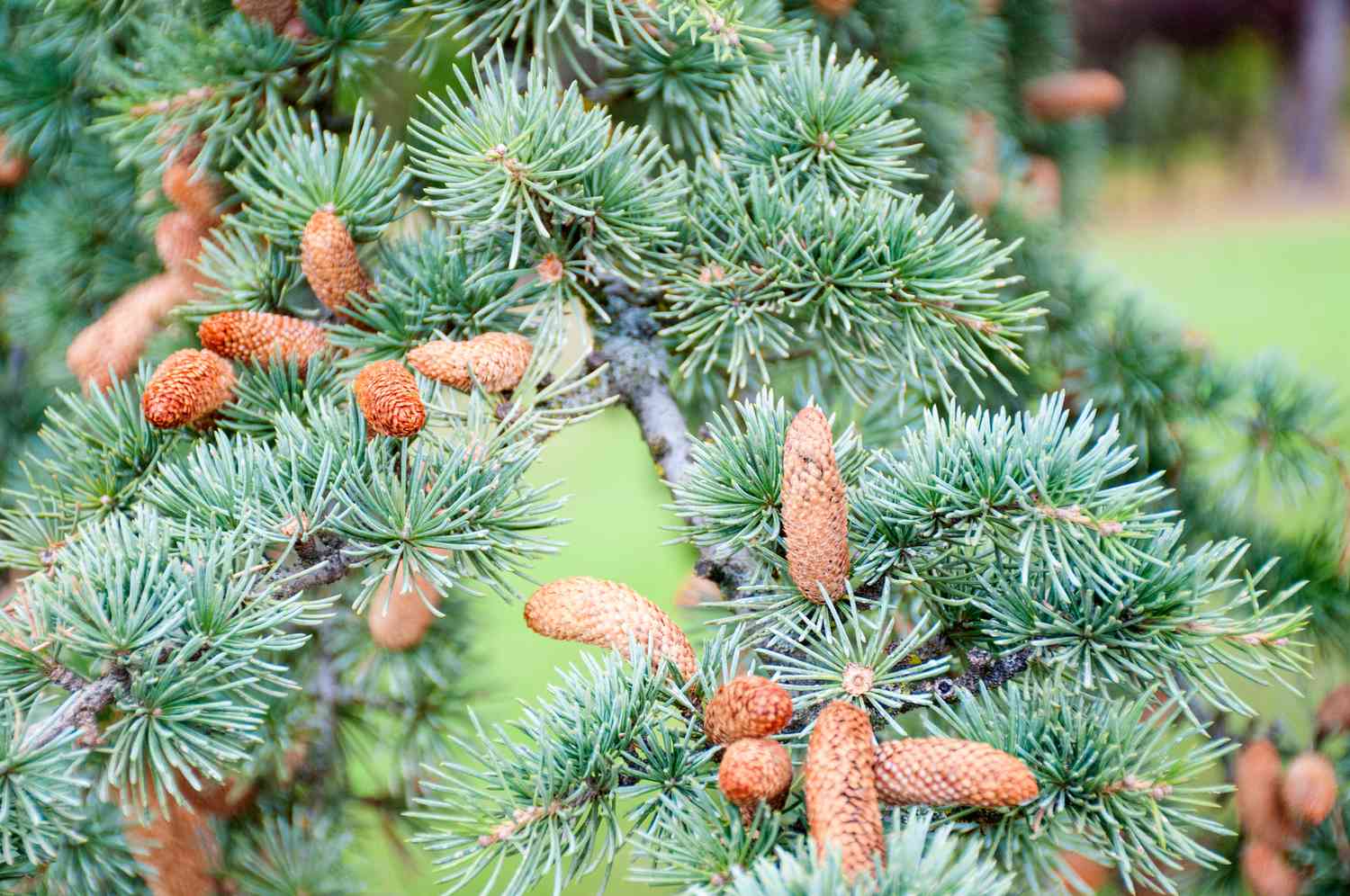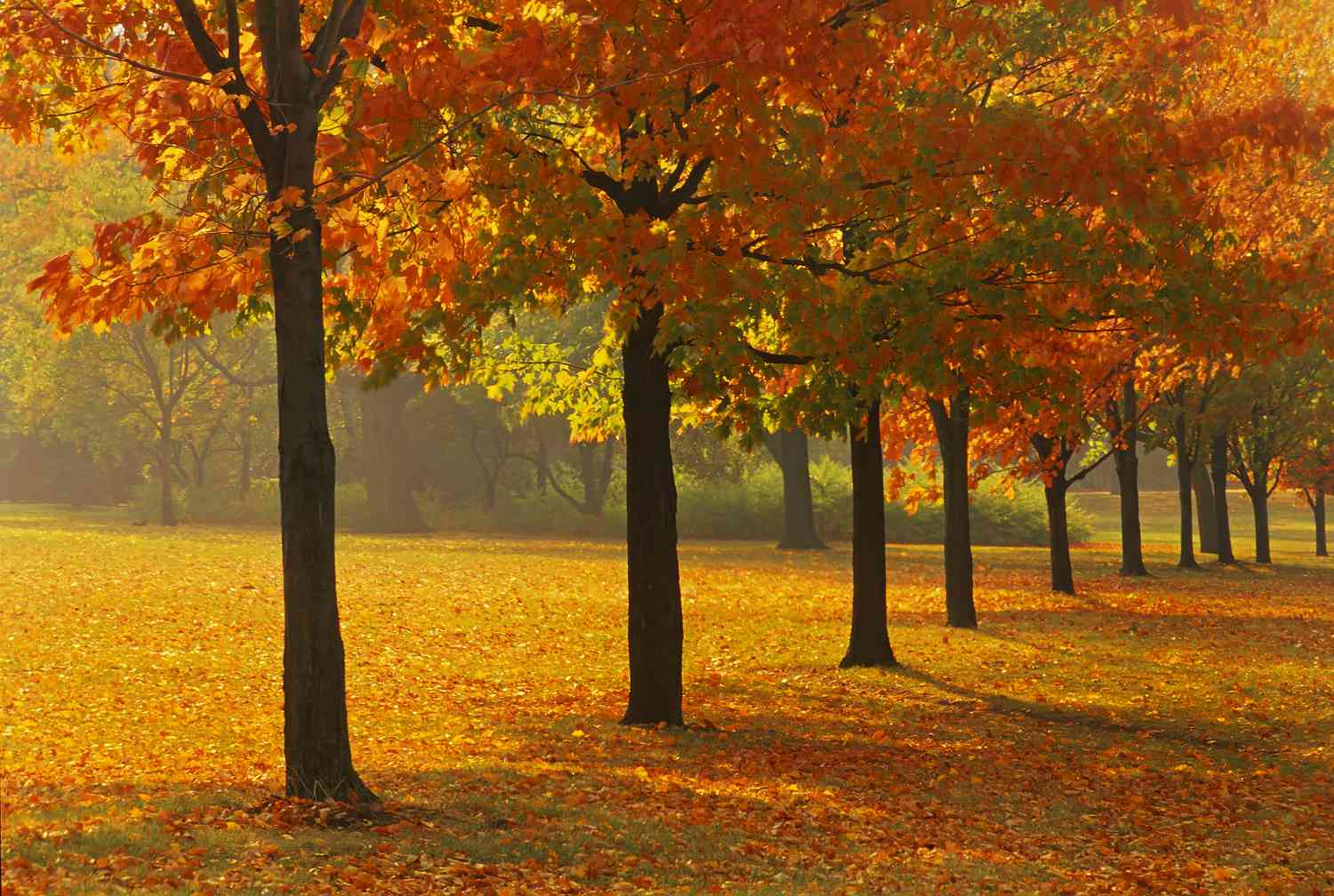Home>Types of Gardening>Ornamental Gardening>What Do Shoe Trees Do


Ornamental Gardening
What Do Shoe Trees Do
Published: November 10, 2023
Discover the importance and benefits of using shoe trees in ornamental gardening. Keep your plants healthy and thriving with the help of these essential tools.
(Many of the links in this article redirect to a specific reviewed product. Your purchase of these products through affiliate links helps to generate commission for Chicagolandgardening.com, at no extra cost. Learn more)
Table of Contents
Introduction
Welcome to the world of shoe trees! If you’re a shoe enthusiast or someone who takes pride in their footwear, you may have come across the term “shoe trees” before. But what exactly are shoe trees and what do they do?
Shoe trees are specially designed devices or inserts that are placed inside shoes to help maintain their shape, prevent creases and wrinkles, absorb moisture, and extend their lifespan. They are typically made from materials such as wood, plastic, or metal, and come in various sizes to fit different shoe styles and sizes.
In this article, we will dive deeper into the world of shoe trees and explore their benefits, functionality, and how to choose the right pair for your shoes. Whether you’re a sneakerhead with an extensive collection of kicks, a dapper gentleman with a penchant for leather shoes, or just someone looking to keep their favorite pair in top-notch condition, understanding the importance of shoe trees is crucial.
So, if you’ve ever wondered why shoe enthusiasts swear by the use of shoe trees or if you’re simply curious about how to take better care of your footwear, read on. We’ll guide you through everything you need to know about the wonders of shoe trees and how they can keep your shoes in impeccable shape.
Explanation of Shoe Trees
Shoe trees serve the purpose of preserving and maintaining the original shape of shoes. When shoes are not being worn, they are subject to losing their form and structure. This can lead to unsightly creases, wrinkles, and a general deterioration of the shoe’s appearance over time.
By inserting a shoe tree into each shoe, you provide it with the necessary support to retain its shape. The shoe tree expands to fill the interior space of the shoe, counteracting any tendency for the shoe to collapse or flatten out.
Shoe trees are typically made from high-quality materials such as cedar wood, which is known for its ability to absorb moisture, control odor, and deter pests. The natural properties of cedar also impart a pleasant, refreshing scent to the shoes.
The design of a shoe tree typically mimics the shape of a foot, with a heel and a toe area. This design ensures that the shoe tree can effectively stretch the shoe and help eliminate any existing creases or wrinkles. It also helps to maintain the shape of the toe box and prevent it from becoming squished or misshapen.
Additionally, some shoe trees come with adjustable features such as a split toe, allowing for further customization to fit your shoe perfectly. This versatility ensures that shoe trees can be utilized in a variety of shoe styles, from dress shoes and loafers to boots and sneakers.
Overall, shoe trees act as a safeguard against the effects of time and wear on your shoes. By providing consistent support and shape retention, they not only enhance the appearance of the shoes but also prolong their lifespan.
Benefits of Using Shoe Trees
The benefits of using shoe trees go beyond merely maintaining the shape of your shoes. Let’s explore some of the key advantages:
- Maintaining Shoe Shape: The primary purpose of shoe trees is to preserve the original shape of your shoes. By preventing them from collapsing or deforming, shoe trees help your shoes look their best.
- Preventing Creases and Wrinkles: Shoes, especially leather ones, are prone to developing creases and wrinkles with wear. Shoe trees help prevent these unsightly marks by stretching the leather, smoothing out any existing creases, and maintaining a smooth surface.
- Absorbing Moisture and Odor: Feet can get sweaty, leading to moisture build-up inside shoes. Shoe trees made from cedar wood not only absorb moisture but also control odor, leaving your shoes fresh and dry.
- Enhancing Shoe Lifespan: By keeping shoes in their proper shape, minimizing creasing, and absorbing moisture, shoe trees contribute to extending the lifespan of your favorite footwear. This means you can enjoy them for a longer time without needing to replace them.
- Improving Comfort: Shoe trees not only maintain the external shape of your shoes but also help preserve the internal structure. This preserves the cushioning and support, ensuring maximum comfort when you wear them.
- Transportation and Storage: Shoe trees are not only beneficial when your shoes are resting at home. They also serve a purpose when you travel or store your shoes. Shoe trees help protect the shape of your shoes in transit and prevent them from getting flattened or misshapen during storage.
These benefits highlight the importance of using shoe trees in your footwear care routine. Whether you have expensive leather dress shoes or everyday sneakers, incorporating shoe trees into your shoe maintenance routine can help elevate your shoe game and keep your footwear in excellent condition for years to come.
Maintaining Shoe Shape
One of the primary benefits of using shoe trees is their ability to maintain the shape of your shoes. When shoes are left without support, they can lose their form and become misshapen over time.
By inserting shoe trees into your shoes when they are not being worn, you provide them with the necessary structure to preserve their shape. The shoe trees expand to fill the interior space of the shoes, preventing them from collapsing or becoming flattened.
This is particularly important for certain types of shoes that are prone to losing their shape more easily. For example, leather shoes tend to crease and develop wrinkles with wear. By using shoe trees, you can effectively stretch the leather and minimize the appearance of these creases, keeping your shoes looking newer for longer.
Moreover, maintaining the shape of your shoes not only improves their appearance but also affects their overall fit and comfort. Shoes that have lost their shape may not fit as well, leading to discomfort and even potential foot issues. With shoe trees, you can ensure that your shoes retain their proper shape, allowing for a comfortable and snug fit every time you wear them.
It’s also worth noting that shoe trees can help address specific areas of concern. For example, if you have shoes with a narrow or pointed toe box, using a shoe tree with an adjustable split toe can help stretch and maintain the shape of that specific area. This customization ensures that your shoes retain their desired shape, regardless of their unique design.
So, whether you have dress shoes, loafers, or even sneakers, using shoe trees to maintain their shape is essential. Not only will it keep your shoes looking their best, but it will also contribute to their longevity and ensure a more comfortable fit. Incorporating shoe trees into your footwear care routine is a small investment that can yield significant benefits over time.
Preventing Creases and Wrinkles
Creases and wrinkles can significantly impact the appearance of your shoes, particularly leather ones. Luckily, shoe trees play a vital role in preventing and minimizing these unsightly marks.
When you wear shoes, especially leather ones, they naturally flex and bend with each step you take. Over time, this repetitive motion can lead to the formation of creases and wrinkles on the surface of the shoes.
By inserting shoe trees into your shoes after each wear, you can counteract the effects of flexing and stretching. The shoe tree expands to fill the shoe’s interior, stretching out the leather and smoothing out any existing creases. This process helps to maintain a clean and polished appearance.
Furthermore, shoe trees help prevent new creases from forming by providing consistent and gentle pressure against the leather. This pressure helps to distribute any stress and tension caused by wear, minimizing the likelihood of creases forming in the first place.
It’s important to note that the prevention of creases and wrinkles is particularly crucial for leather shoes. Leather is a natural material that can develop permanent creases if not properly cared for. By using shoe trees, you can significantly extend the life of your leather shoes and keep them looking fresh and unwrinkled.
In addition to preventing aesthetic issues, reducing creases and wrinkles also contributes to the overall comfort and longevity of your shoes. When shoes have prominent creases and wrinkles, they can become uncomfortable to wear, causing irritation or rubbing on the foot. By maintaining a smooth surface, shoe trees ensure a more comfortable fit every time you slip on your favorite pair of shoes.
By investing in shoe trees and incorporating them into your shoe care routine, you can effectively prolong the lifespan of your shoes, preserve their appearance, and enjoy a more comfortable wearing experience.
Absorbing Moisture and Odor
Moisture and odor are common issues that can affect the lifespan and freshness of your shoes. Fortunately, shoe trees are equipped to tackle these problems by effectively absorbing moisture and eliminating unpleasant odors.
After a long day of wear, it’s not uncommon for shoes to become damp or sweaty. Moisture buildup can lead to the growth of bacteria, which can result in unpleasant odors and potential damage to the shoe materials.
Shoe trees, particularly those made from cedar wood, have natural moisture-absorbing properties. When inserted into your shoes, cedar shoe trees can effectively wick away moisture, helping to keep them dry and fresh. The absorbent nature of cedar also helps to combat the growth of bacteria, reducing the chances of odor development.
In addition to moisture absorption, cedar shoe trees impart a pleasant scent to your shoes. The natural aromatic oils present in cedarwood release a refreshing fragrance that helps to counteract any lingering odor. As an added bonus, the scent of cedar is also known to repel pests, keeping your shoes protected from unwelcome visitors like moths or mites.
Using shoe trees with moisture-absorbing properties offers multiple benefits. By keeping your shoes dry, you can prevent the deterioration of materials such as leather or canvas, which can become discolored or damaged when exposed to excess moisture. Additionally, eliminating odors makes slipping into your shoes a more pleasurable experience while ensuring that your shoes stay fresh between wears.
Remember, it’s important to regularly remove and air out your shoe trees to allow them to dry thoroughly. This helps maintain their effectiveness in absorbing moisture and controlling odors.
By incorporating shoe trees into your shoe care routine, you can actively combat the problems of moisture and odor, ensuring that your shoes stay dry, fresh, and in top condition for longer.
Enhancing Shoe Lifespan
When you invest in a pair of shoes, you want them to last as long as possible. This is where shoe trees come in, playing a significant role in prolonging the lifespan of your footwear.
By using shoe trees regularly, you ensure that your shoes maintain their shape and structural integrity. When shoes are left without support, they can easily become misshapen, leading to creases, wrinkles, and a general deterioration in appearance. These signs of wear can significantly reduce the lifespan of your shoes.
Shoe trees counteract this by providing consistent and gentle pressure against the shoe’s interior, helping to preserve its original shape. This reduces the likelihood of creases and wrinkles forming, keeping your shoes looking newer for longer.
In addition to maintaining shape, shoe trees also help to absorb moisture. Excess moisture can cause materials such as leather or fabric to warp or rot over time. By using shoe trees made from moisture-absorbing materials like cedar, you can prevent these damaging effects and extend the life of your shoes.
Furthermore, shoe trees contribute to the overall comfort and fit of your shoes. When shoes lose their shape, they may not fit as well, leading to discomfort and even foot-related issues. By using shoe trees to maintain the proper shape and support of your shoes, you ensure that they remain comfortable and wearable for an extended period.
It’s worth noting that shoe trees also play a crucial role in transporting and storing your shoes. When you travel or store your shoes, they can be subjected to pressure or compression, which can alter their shape. By inserting shoe trees during these times, you help protect the structure of your shoes, minimizing any damage that may occur.
Ultimately, shoe trees are a small investment that yields significant benefits in shoe longevity. By incorporating them into your footwear care routine, you can preserve the aesthetic appeal, structural integrity, and overall lifespan of your beloved shoes, allowing you to enjoy them for many years to come.
Choosing the Right Shoe Trees
When it comes to selecting the right shoe trees, there are a few factors to consider to ensure they meet your specific needs and requirements. Here are some key considerations:
- Material: Shoe trees are commonly made from wood, plastic, or metal. Wood, particularly cedar, is a popular choice due to its natural moisture-absorbing properties and ability to control odors. Plastic and metal shoe trees are more durable and may offer additional features like adjustable splits that provide a customized fit.
- Size and Fit: Choosing the correct size and fit is crucial for effective shoe tree usage. It’s recommended to select shoe trees that closely match the size of your shoes. Most shoe trees are available in multiple size ranges, so be sure to consult the manufacturer’s size guide to find the best fit for your specific shoe size.
- Type: Consider the type of shoe tree that suits your footwear collection. Full shoe trees are designed to fill the entire interior of the shoe, offering maximum support and shape retention. Toe inserts are ideal for those who want to focus on preserving the shape of the toe box without expanding into the entire shoe.
- Adjustability: Some shoe trees come with adjustable features to accommodate different shoe styles and sizes. Look for shoe trees with split toes that can be adjusted to fit shoes with narrower or pointier toe boxes. This allows for a more customized fit and prevents any unnecessary stretching or strain on the shoes.
- Quality: Opt for shoe trees made from high-quality materials that are built to last. Sturdy construction ensures durability and proper support for your shoes. Investing in well-made shoe trees will give you confidence that they will effectively preserve the shape and condition of your shoes over the long term.
Additionally, it’s worth considering purchasing multiple pairs of shoe trees so you can rotate them between your shoes. This allows each pair of shoes to benefit from using shoe trees regularly, promoting their longevity and keeping them in excellent condition.
Remember, the right shoe trees should provide proper support, help maintain shape, absorb moisture, and fit comfortably inside your shoes. By carefully considering these factors, you can choose shoe trees that effectively meet your shoe care needs, extending the lifespan of your footwear and ensuring they always look their best.
Conclusion
Shoe trees are an essential accessory for any shoe enthusiast or individual looking to maintain the longevity and appearance of their footwear. These specially designed inserts help preserve the shape, prevent creases and wrinkles, absorb moisture, and enhance the overall lifespan of your shoes.
The benefits of using shoe trees go beyond maintaining the external aesthetics of your shoes. They also contribute to your comfort by preserving the internal structure and providing a consistent fit. With shoe trees, you can ensure that your shoes retain their original shape, preventing discomfort and foot-related issues.
Choosing the right shoe trees involves considering factors such as material, size, type, adjustability, and overall quality. Selecting the appropriate shoe trees tailored to your footwear collection will ensure optimal support, protection, and preservation of your shoes.
When it comes to caring for your shoes, incorporating shoe trees into your routine is a small investment that yields significant benefits. From preventing creases and absorbing moisture to maintaining shape and enhancing shoe lifespan, shoe trees play a crucial role in keeping your shoes in impeccable condition.
So, whether you’re a sneakerhead with an extensive collection, a fashion-conscious individual with a love for leather shoes, or simply someone looking to take better care of their footwear, make shoe trees a part of your shoe care regimen. Embrace their functionality and benefits to enjoy shoes that always look and feel their best, standing the test of time.






